The Clarkdale Review: Intel's Core i5 661, i3 540 & i3 530
by Anand Lal Shimpi on January 4, 2010 12:00 AM EST- Posted in
- CPUs
I swear this is the longest it’s taken for an Intel architecture to penetrate the market. We first met Nehalem on November 3rd, 2008. It came to us as a high end quad-core processor and took a full year to make it to more affordable motherboards in the form of Lynnfield. Even with P55 motherboard prices down at the magical $99 marker, Intel relinquished control of the $100 - $200 CPU market without a Nehalem to compete down there. Instead we were left with a choice between Penryn, the update to Intel’s 2006 Conroe architecture, or Phenom II, AMD’s low-cost Nehalem competitor. The choice was simple.
From $100 to $200, your best bet has been AMD. Either through aggressive pricing on quad-core CPUs or the L3-cache-less Athlon II line, AMD controls the $100 - $200 market. Today we meet Intel's first 32nm CPUs, codename Clarkdale, designed to specifically target that $100 - $200 market.
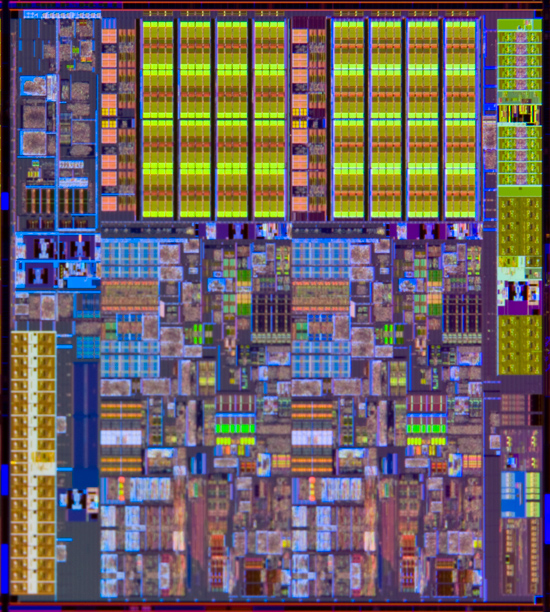
Two cores, Nehale..err Westmere-style
Technically Clarkdale isn’t Nehalem, it’s Westmere. Take Nehalem, use 32nm transistors, add in some new instructions for accelerating encryption/decryption, and you’ve got the makings of Westmere.
Clarkdale uses a dual-core Westmere and sticks it next to a 45nm Intel GMA die. That’s right, meet the first (er, second) Intel CPU with on-chip graphics. Next year we’ll see Sandy Bridge bring the graphics on-die, but until then we have Intel’s tried and true multi-chip-package to tide us over.
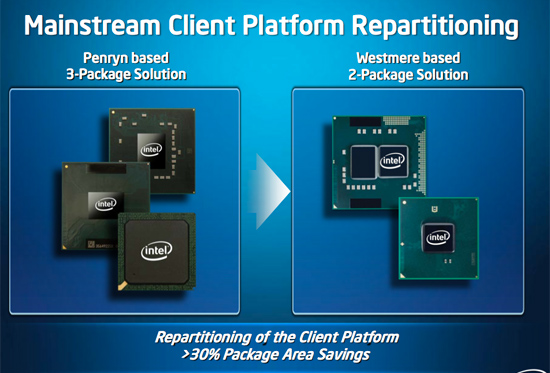
We don’t get on-die graphics yet because Intel still hasn’t switched over to its make-everything-at-the-best-process-ever strategy. The 32nm fabs are ramping up with CPU production and the 45nm fabs need something to do. Nearly every desktop and laptop sold in 2010 will need one of these 45nm GMA die, so the fabs indeed have something to do.
It’s not all rosy with Clarkdale unfortunately. Remember the memory controller that Nehalem so graciously integrated? Clarkdale kicks it off die again. The IMC is housed in the 45nm GMA die. It’s still on-package, but not on-die. The benefit is super fast memory access for the graphics core, but slower memory access for the CPU core. In fact, this is a derivative of the memory controller used in older Intel chipsets (e.g. P45/X48).
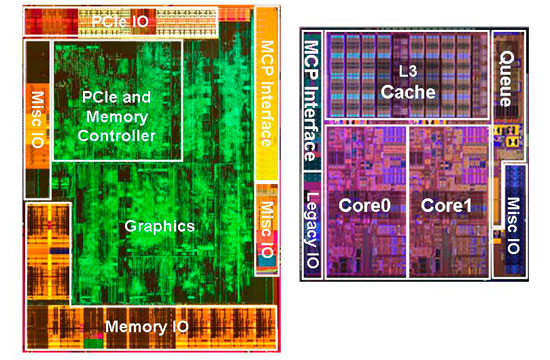
The CPU connects to the GMA die using QPI, so bandwidth shouldn’t be as big of a problem. Latency is unfortunately hurt as a result. Access times can be longer than older LGA-775 processors thanks to this memory controller design being optimized for FSB architectures. Again, the problem goes away with Sandy Bridge, but today we’re faced with it.
Like Lynnfield, Clarkdale uses Intel’s LGA-1156 socket. Clarkdale should work in all P55 motherboards, but you’ll need a BIOS update. No existing P55 motherboards route video from the socket to a VGA/DVI/HDMI connector, so you’ll need a new motherboard if you want to take advantage of the on-package graphics. Enter the H55, H57 and Q57 chipsets.
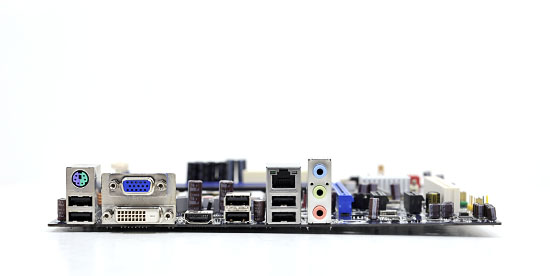
A typical H57 I/O layout
The H and Q-series of chipsets feature what Intel calls its Flexible Display Interface (FDI). This is basically a link between the CPU and the chipset that passes along video output. H5x/Q57 motherboards will have a video out on board so you can use Clarkdale’s integrated graphics.
The chipsets differ in price and features. The table below sums it up:
Support for Intel’s Rapid Storage Technology is probably the main reason you’ll want H57 over H55. The difference between H57 and Q57 boils down to security and management features. The H-series is for consumers, the Q-series is for corporate customers. Make sense?
The chips themselves are pretty straightforward. Intel is launching seven desktop Clarkdale processors (and a whole lot more notebook Arrandale chips):
| Processor | Core Clock | Cores / Threads | L3 Cache | Max Turbo | TDP | Price |
| Intel Core i5-670 | 3.46GHz | 2 / 4 | 4MB | 3.76GHz | 73W | $284 |
| Intel Core i5-661 | 3.33GHz | 2 / 4 | 4MB | 3.60GHz | 87W | $196 |
| Intel Core i5-660 | 3.33GHz | 2 / 4 | 4MB | 3.60GHz | 73W | $196 |
| Intel Core i5-650 | 3.20GHz | 2 / 4 | 4MB | 3.46GHz | 73W | $176 |
| Intel Core i3-540 | 3.06GHz | 2 / 4 | 4MB | N/A | 73W | $133 |
| Intel Core i3-530 | 2.93GHz | 2 / 4 | 4MB | N/A | 73W | $113 |
| Intel Pentium G9650 | 2.80GHz | 2 / 2 | 3MB | N/A | 73W | $87 |
The six processors labeled Core i5s and Core i3s all have the same basic architecture. You get per-core 256KB private L2s and you get a 4MB L3 cache shared among both cores (down from 8MB from the quad-core Lynnfield/Bloomfield chips). The i5s get turbo mode while the i3s do not. The i5-661 uses a higher graphics clock and has a higher TDP than the 660. Remember that these are CPU+GPU combos on a single package, so GPU clocks do vary based on model.
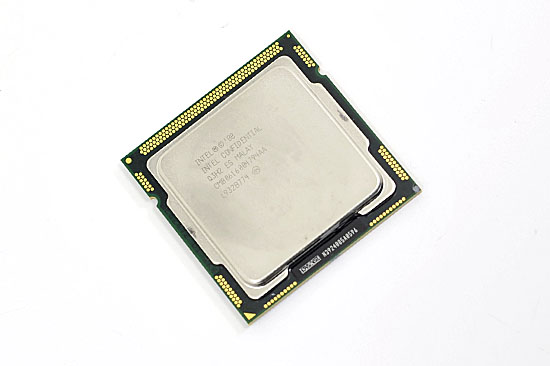
The Clarkdale lineup is honestly made up of CPUs that are too expensive. The Core i5 670, 661/660 and 650 are all priced above $170 and aren’t worth the money. The problem is Lynnfield’s turbo mode gives you high enough clock speeds with two threads that there’s no need to consider a dual-core processor. You can buy a Core i5 750, have more cores than any of these Clarkdales and run at close enough to the same frequencies for $196. Or you can buy a Phenom II X4 965 for about the same price and have much better multi-threaded performance. The chips that are most interesting are the Core i3s.
| Processor | Clock Speed | Max Turbo | |
| 2 Cores Active | 1 Core Active | ||
| Intel Core i5-670 | 3.46GHz | 3.60GHz +3.9% | 3.73GHz +7.7% |
| Intel Core i5-661 | 3.33GHz | 3.46GHz +4.0% | 3.60GHz +8.0% |
| Intel Core i5-660 | 3.33GHz | 3.46GHz +4.0% | 3.60GHz +8.0% |
| Intel Core i5-650 | 3.20GHz | 3.33GHz +4.2% | 3.46GHz +8.3% |
| Intel Core i3-540 | 3.06GHz | N/A | |
| Intel Core i3-530 | 2.93GHz | N/A | |
Turbo just isn't as interesting with only two cores. With four cores you used to have to make a tradeoff between good 4 and 2 threaded performance, but Lynnfield fixed that. No one really debates single vs. dual core anymore. The single core turbo modes are great, but aren't worth the money. Pay attention to the i3s.


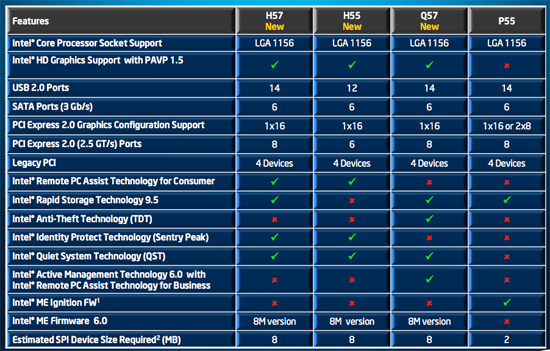








93 Comments
View All Comments
Paladin1211 - Monday, January 4, 2010 - link
On page 13, in WoW benchmark, the Core i5 750 outperforms the Core i7 870 by more than 30% (92.3 fps vs 70.6 fps). Anything wrong here?Crimson67 - Tuesday, January 5, 2010 - link
WoW doesn't seem to like hyperthreading, it's the only explanationereavis - Wednesday, January 6, 2010 - link
is it using the hyperthread core on the 870 but a true core on the 750? That would certainly slow it down. If it's using a true core on both it should be better still.Dyzios - Monday, January 4, 2010 - link
Remember NVIDIA Hybrid idea, to have two GPUs ? - one weak for 2D/light 3D graphics and powerful discrete GPU for gaming? Those CPU makes sense for this approach - however Radeon 5870 also has good point with optimized low idle power consumption. Maybe still there is point as even Radeon cannot go very low as GPU on-die. The only question is to have capability to switch HDMI output between on-die GPU and discrete.I wonder how this works currently - still needed to stick to DVI output from Radeon or can be combined?Zool - Tuesday, January 5, 2010 - link
If the 40nm 5600 series cards will show the same improvments in power usage than the 5800 series than u can forget the intels GMA graphic.I think that for a 2D card/3D discret card u can buy a mobo with a dirty cheap intel GMA on it clocked much lower if u realy need.
silverblue - Wednesday, January 6, 2010 - link
The graphics comparison isn't exactly fair but in the end, it's not something AMD should be too worried about. The i5-661, with its 900MHz 45nm GPU, is being compared to the old 790GX's HD 3300 which operates at 700MHz on a 55nm process. I admit, in the benchmarks we're talking the best i5 vs. the best AMD has to offer, but considering...a) the relative performance of the i5-750 as compared to the PII X4 965 which is usually manifested as an advantage
b) the fact that the 32nm i5s can increase their core speed by 133MHz and 266MHz thanks to Turbo depending on the number of active cores
c) most games still aren't designed to take full advantage of multithreading so four cores may not yield a tangible performance increase
...then AMD's still in the lead for IGPs. If the 3300 had been clocked at 900MHz, would it have lost even one of the listed benchmarks? I'm not sure it would have. What's more, we're still talking a 55nm part; we all know of TSMC's issues with the 40nm process and AMD going fablress, so is it unreasonable to expect that AMD could move their IGP production en masse to 40nm with TSMC or 45nm with GlobalFoundries?
In closing, it's a big step forward for Intel, however if AMD came out with a higher clocked 40/45nm IGP then, Sideport or not, new tech or not, AMD would be far ahead, at least on gaming terms. Sideport does very little for the performance of current AMD IGPs, anyway.
I just wish AMD were able to release a Clarkdale competitor sooner rather than later.
ruetheday - Friday, January 8, 2010 - link
the IGP on Clarkdale isn't maxed out at 900Mhz; It too can be overclocked significantly. Here's an article on techgage showing an OC to 1133, for example.Remember that Intel is very conservative on binning parts to ensure no issues with reliability over time (compare vs nvidia mobile gpus).
silverblue - Friday, January 8, 2010 - link
Maybe so, however a 40/45nm AMD part could reach similar clockspeeds. I just don't think that, clock for clock, the new Intel IGP on the Clarkdale die is as powerful as anything AMD or nVidia can produce on the same scale. It's a good step forwards, just not the leadership that some may have been expecting.silverblue - Wednesday, January 6, 2010 - link
Slight mistake... second best 32nm i5 that Intel has to offer. However, I doubt the performance increase over the 661 will be very noticable with the IGP; won't it be clocked the same in both?Zool - Monday, January 4, 2010 - link
The irony is the biggest drawback of these cpu-s is the 45nm intel graphic on other die with the memmory controler. The die savings from 45nm vs 32nm are quite big.If they would make just 32nm dual core nehalem with memory controler on die it would be still much smaller(and only litle bigger than the clarkdale without imc) than the GMA die with memmory controler.
The whole thing would be solved with everything as one on 32nm.
I think plenty of people just wait for 32nm quad core nehalems without the useless GMA graphic.
Actualy what is the cost of dirty cheap GMA in penryn based 3 package boards. Like 5-10 dolars ?